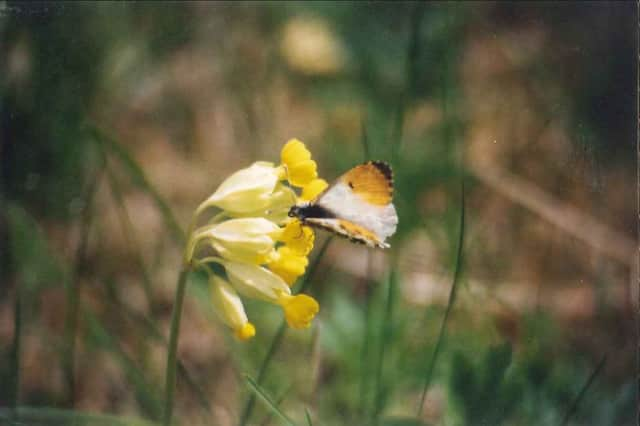RICHARD WILLIAMSON: Let your garden grow in support of butterflies


They will return in a few years’ time as my research shows they have swung up and down at regular intervals over the past four decades.
Some think this to be the worst butterfly year ever. But it is still early days. Recorders like myself all over the country are busily walking their weekly transects, marking every insect seen and measuring the declines and falls.
Advertisement
Hide AdAdvertisement
Hide AdBut one of the butterflies in the ointment however is that the regular highs and lows, acceptable as natural, are getting averagely lower in themselves. Of the 54 species regularly monitored in Britain, 26 remain steady on the graph over 40 years, 12 are increasing, but 16 are declining. These include quite common species like the small skipper, small tortoiseshell, and small heath.
At the end of September I expect we shall find we are in another four-year trough. That of 2001 was bad enough, but numbers struggled back in ten years and we enjoyed a high in 2011. Only to see another crash like that of 1980. So it will go on as insects follow what must be an ancient pattern of fortune and disaster.
So this season started really badly with only one peacock, one red admiral and one brimstone being the usual weekly harvest for watchers on their individual patches. Grizzled skippers were absent in mid to late April, so were dingy skippers. Stalwarts like the spring broods of small copper and common blue were hard to find due to the cold weather.
By the time the temperatures at last recovered for the May Day weekend it was too late for many. Their slot had passed. They could not find a breeding partner and with lifespans of only a few days, did not have time to search. One or two couples will have mated to keep the family alive in each area. But marginal habitats could lose species altogether.
Advertisement
Hide AdAdvertisement
Hide AdAs with bees, they need all the help we in our gardens and farmers in their fields can give. Clean weed-free lawns for instance are, in my view, extremely damaging to wildlife. Using weed-killer is a sin as far as I am concerned.
Thankfully, many large estates with 18th-century vistas into the distance nowadays allow wild flowers and tall grasses to grow, so benefiting butterflies and bees and a myriad of tiny insects and allowing them to flourish.
The National Trust leads the way in wildlife crops and everyone should follow their example.
Please protect any caterpillar colonies on stinging nettles: these are the next flight of peacocks or red admirals. Watch out for green hairstreaks on dogwood and brimstone on buckthorn. The females lay their eggs on these particular nursery plants which feed the caterpillars. Holly blues need holly and ivy to cover their ‘double’ broods.
Advertisement
Hide AdAdvertisement
Hide AdThe ‘brown’ butterflies such as speckled wood, ringlet, meadow brown, and skippers lay their eggs on long grasses. So do please allow wild areas on your lawn where the tiny caterpillars can feed.
You will be rewarded later in the season when they turn into butterflies and keep the countryside alive.